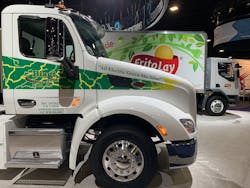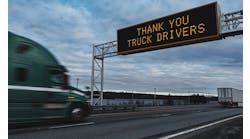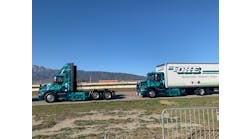Editor's note: See stories from earlier this week looking at the decade ahead for fleets and on the projected growth of electric commercial vehicles.
So much of the discussion back at the North American Commercial Vehicle (NACV) show centered around the excitement of this new decade just underway.
Numerous freight transportation experts suggested there is likely to be more advancements during the next 10 years than in the past five decades combined. That is quite a statement, considering how many monumental moments took place during the just-completed decade.
While there are too many achievements to attempt to name in this space, one that stands out is the Freightliner Inspiration truck.
As I witnessed the autonomous truck’s ride across the Hoover Dam in May 2015—and got my own test drive the next morning —it felt obvious the truck was going to have a lasting impact.
Since that watershed event, an explosion of upstart companies have burst onto the scene, aiming to disrupt trucking’s status quo in areas such as connectivity, electrification, and supply chain efficiency.
That isn’t to imply one event deserves all the credit. But considering a few years earlier “driverless” vehicles could only be found in the movies, the Inspiration truck succeeded in changing the perception of the entire industry.
Fleet Owner had the opportunity to speak with Roger Nielsen, a 30-year veteran of Daimler Trucks North America (DTNA) who became president and CEO in March 2017, at NACV about the events of the past 10 years. He credited the relentless demand for better fuel efficiency and lower emissions at the start of the 2010s for setting the stage for what was to come.
Nielsen said there were many different ideas under development, “but we couldn’t do them all at once,” especially with so much focus on the rollout of equipment to meet the Environmental Protection Agency’s emissions regulation at the start of 2010. That was also a period characterized by record-high diesel prices — nearly $5 a gallon in certain regions — and slower freight demand through a prolonged, slow recovery following the worst of a recession.
Since “you can’t bring fuel efficiency changes every day,” Nielsen said DTNA kicked off a two-year innovation cycle in an effort to align other technological advancements with planned engine and equipment upgrades to meet fuel efficiency and greenhouse gas emissions standards.
That made more sense than trying to roll out a different technology or advanced drivers safety system six months after launching a new engine.
So what does this mean for the next 10 years?
Though fuel economy has dominated the innovation cycle, now that is just the “entry ticket,” Nielsen explained.
There is a greater focus on overall aerodynamics as OEMs optimize the entire vehicle for fuel efficiency targets, rather than just the engine.
The interest in safety systems has accelerated to the point it is on a “parallel path” with fuel economy. Combined with automation, electrification, and connectivity, these are individual areas that all require significant investment to meet the demands of fleet customers.
“The pace is just as fast in each of them as it was when it was just fuel efficiency,” Nielsen explained.
A similar message was shared by Jason Skoog, general manager of Peterbilt Motors, who said at NACV customers are trying to keep their average fleet age at less than two years. Part of these efforts are to help recruit and retain drivers because fuel efficiency and technology offerings are getting better “every single year,” Skoog said.
In looking at the decade ahead of us, Nielsen predicted it is going to be shocking for skeptics to see how much progress will take place with battery electric commercial vehicles.
Though just in its infancy, he pointed to the introduction of the iPhone in 2007. Less than a decade later, few people did not have a smartphone in their possession.
A more industry-specific example is the transition to automated manual transmissions in Class 8 trucks. In only a few years, a total shift away from manual transmissions in the United States has taken place, something that felt impossible not long ago.
As recent history has shown us, impossible is a word that only challenges the brightest minds of this industry to make it possible.
I look forward to the next 120 months to see all the achievements to come this decade.





